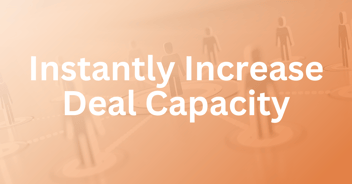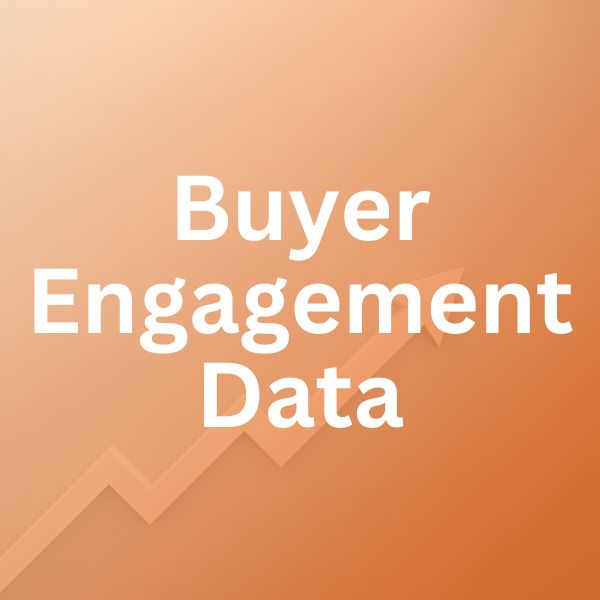
It’s no secret that B2B selling has slowed down and become more challenging. We’ve seen numerous reports of sales reps missing their quota, deals being pushed into the next quarter, and revenue growth slowing down. To make matters worse, businesses have spent billions of dollars on enablement technology, just to see low adoption and little-to-no improvement in performance. Unfortunately, to save money and operate more efficiently, many businesses have resorted layoffs.
Because of these conditions, sales teams are under pressure to sell more effectively and more efficiently. Some sales organizations are achieving more efficient growth, exceeding their quarterly goals despite a limited budget and smaller sales organization.
What's their key to success? Leveraging buyer engagement data as part of their sales strategy.
Below are 8 ways buyer engagement data helps sales teams sell more effectively and efficiently.
- Personalized sales approach: Arming sales reps with engagement data gives them a better understanding of their buyer’s preferences and allows them to tailor their pitches and focus on the most relevant solutions for potential customers. Insights reveal their buyer’s pain points, interests, and needs, enabling them to craft more relevant and compelling sales pitches and build stronger relationships with potential customers.
- Identifying warm leads: Engagement data helps identify leads that show high levels of interest and are more likely to convert into customers. By tracking interactions like buyer portal visits, searches, colleagues invited, content consumed, frequency of visits, content downloads, and others, sales reps can prioritize their efforts on leads taking actions that show they’re actively engaged and more likely to progress down the sales cycle. On the flip side, engagement data shows which opportunities are not progressing as expected, and can advise sales reps on how to re-engage with them to stay top of mind and get the deal moving forward.
- Optimizing sales strategy: Data on buyer engagement allows Sales teams to assess the effectiveness of their sales efforts. By identifying the strategies, channels, or content that consistently yield higher engagement rates, Sales orgs can allocate resources more efficiently and invest in the areas that generate the most results.
- Prescriptive analytics and recommended actions: Not only does buyer engagement data show sales reps how individual opportunities are behaving, but it also fuels a prescriptive analytics engine that recommends next actions for the sales rep to take based on historical data. Prescriptive analytics guides each rep to get the deal finished more efficiently.
- Shortening the sales cycle: Understanding where prospects are in their buyer's journey based on their engagement data enables sales teams to provide the right information and support at the right time. This helps accelerate the sales process by addressing potential roadblocks and guiding prospects through the funnel more effectively.
- Improved forecasting accuracy: Many Sales teams rely on the internal sales steps that have been completed to measure the health of their pipeline. With today’s convoluted buying processes, those steps no longer paint an accurate picture. However, the steps that the buyer must take on the way to a closed deal remain largely the same, and are a much more accurate representation of deal forecast. A quick example is “We had a great meeting” vs. “their CFO engaged in the buyer portal and looked at pricing.”
- Reducing customer churn: Engagement data isn't limited to prospects; it can also be used to monitor customer engagement with post-sales efforts. By keeping track of customer interactions and engagement levels, businesses can identify signs of potential churn early on and take proactive measures to retain valuable customers.
- Data-driven decision-making: Leveraging engagement data fosters a data-driven sales culture. Sales teams can rely on real-world data rather than gut feelings to drive their strategies, leading to more effective and informed decision-making. The Sales teams seeing success today are using data-based selling instead of intuition-based selling.
In conclusion, in a Sales landscape where efficiency and providing value are critical to revenue growth, accumulating and leveraging buyer engagement data is key. Many growth oriented sales teams are leveraging buyer portals/microsites/rooms - not only as a way to provide a modern buying experience to buyers - but as a way to capture buyer behavior and engagement data to leverage during their sales processes and create a data-driven sales culture. The result: driving sustainable revenue growth.
To start leveraging buyer engagement data, you must collect it. Platforms like Omedym exist to let businesses provide valuable learning and buying experiences to prospects and accumulate the data from prospects’ engagement. The platform arms each sales rep with recommendations based on engagement data to close each deal more efficiently and generated opportunity scores to give Sales leaders confidence in their pipeline forecast.
Receive an on-demand demo portal, request a live demo, or speak with the Omedym team.
Read On

Regain Influence Over Deals By Getting More Time With Your Buyers
Interactions with buyers are essential to moving deals down the sales cycle. Unfortunately, buyers...

How to Fix the Costly Misalignment Between B2B Sales and Modern Buyers
Imagine that you’ve been tasked with finding a software solution for your business. What would your...

